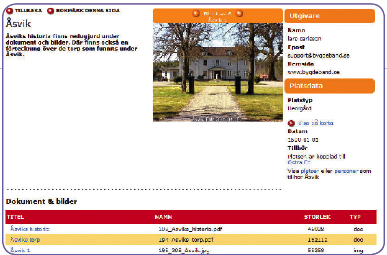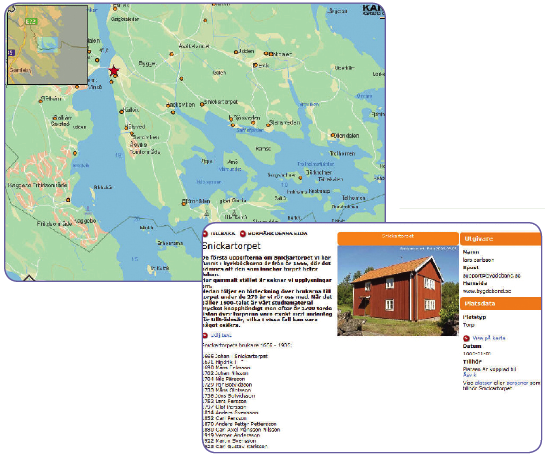Sign up for the Family Tree Newsletter Plus, you’ll receive our 10 Essential Genealogy Research Forms PDF as a special thank you!
Get Your Free Genealogy Forms
"*" indicates required fields
All you genealogists with Swedish roots were already spoiled, what with more than 99 percent of your ancestral country’s church records digitized and accessible from a single Web site, Genline (about $33 a month or $270 a year). Now there’s a new reason for other genealogists to envy you: The company behind Genline is building a new online network to complement its genealogical service—allowing you to round out your ancestral research with collaboration tools and local history.
Familjeband is a Swedish family history Web site where you can build family trees, upload photos and communicate on a message board. Through an agreement with local groups in the Sveriges Hembygdsförbund (Swedish Local Heritage Movement), Genline is helping develop a section of Familjeband called Bygdeband (in beta), where these local groups are uploading photos, letters, probate papers, deeds and other records. Related records are linked, and a map shows places associated with records in the database.
Familjeband is accessible through a free registration and is in Swedish. By the end of 2009, it should have an English interface, and records in Genline will be linked to related records in Familjeband. Eventually, it’ll cost a little—maybe $4 a month—to access records in Familjeband.
Genline also hopes to partner with Swedish heritage groups on this side of the pond to add records and photos documenting the Swedish-American experience to Familjeband. So far, groups from Kansas are uploading documents from Swedish schools and churches.
Come along for a peek behind the scenes of Bygdeband.

The Bygdeband area of the site serves as an online clearinghouse for local history data and documents—which groups within the Swedish Local Heritage Movement are actively contributing. Simply search on a place name and select a location from the results page to see what’s been added thus far. The page for Åsvik estate within Östra Ed parish, for example, contains seven pictures and a PDF file telling the estate’s history.

Each place page includes a link to display that place on a map (visa på karta), where your location is marked with a red star and a thumbnail image in the corner highlights the area of Sweden you’re viewing (top). Click the visa platser eller personer som tillhor Åsvik link to view a list of related places and people—we selected Snickartorpet, a farm whose page (lower right) includes a photo of the house, plus a list of previous inhabitants with the dates they moved in. An English interface is on the way.
Next Gen
If you haven’t visited Genline lately, you’ll want to give it a fresh look—the site is adding more records and user-friendly features. Among the changes:
- Record additions underway include civil birth, marriage and death records through 1920. Coming soon: parish books and vital records up to 1937.
- Household examination books (akin to censuses), which you currently find by browsing, are being indexed by farm name. Many farms were owned by the same family for generations. About 40 percent of the books are already indexed; that’ll probably increase to 90 percent by the end of this year.
- Genline is adding extremely high-resolution, clear record images, with tools that let you enhance them by increasing contrast, removing specks and more.
- A new transcription feature lets users build a personal-name index to Genline records by transcribing names as they find them. Other users can search on those names, vote for one or another transcription, and contribute new versions of a transcription.
From the November 2009 Family Tree Magazine
ADVERTISEMENT
